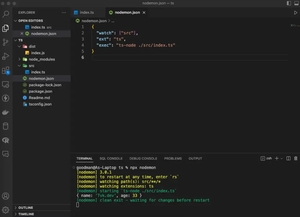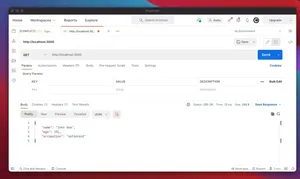Introduction
Node.js streams are an essential part of the platform and are fundamental for managing data processing and manipulation in a resource-efficient manner, especially when handling large files or data in real-time. Streams provide a way to asynchronously handle continuous data flows, which makes them indispensable in scenarios such as file processing, network communications, or any case where data comes in chunks.
This tutorial will introduce you to the concept of streams in Node.js, giving a detailed guide on how to use them for efficient data handling. We will start with the basics, and proceed to more advanced examples, demonstrating the power and efficiency streams bring to Node.js applications.
Basics of Node.js Streams
A stream is an abstract interface for working with streaming data in Node.js. There are several types of streams: readable, writable, duplex (both readable and writable), and transform (a type of duplex where the output is computed from the input). They all inherit from the EventEmitter class, which allows them to emit and listen to events.
const fs = require('fs');
// Creating a readable stream from a file
const readable = fs.createReadStream('largefile.txt');
readable.on('data', (chunk) => {
console.log('Received a chunk with', chunk.length, 'characters');
});
readable.on('end', () => {
console.log('Finished reading the file');
});
Writable Streams
// Creating a writable stream
const writable = fs.createWriteStream('output.txt');
writable.write('Hello, this is a piece of data!\n');
writable.end('This signifies the end of writing data.');
In this section, you learned how to create readable and writable streams and how to handle the ‘data’ and ‘end’ events emitted by a readable stream.
Using Pipe Method
// Piping can redirect a readable stream to a writable stream directly
readable.pipe(writable);
The pipe method can redirect the data from a readable stream to a writable stream, creating a streamlined way to handle data transfers. It simplifies the process of reading from one source and writing to another by automatic backpressure handling.
Handling Stream Events and Errors
Streams, like any form of asynchronous operation, can emit errors. It is essential to handle errors effectively to avoid application crashes or unexpected behavior.
readable.on('error', (err) => {
console.error('Error message:', err.message);
});
Additionally, te stream provides events like ‘readable’, ‘drain’, and ‘finish’ that you can listen to for finer control over data handling and flow.
Advanced Stream Implementations
With the basics covered, let’s delve into some advanced concepts like creating custom streams, using transform streams and managing backpressure manually.
Creating Custom Streams
const { Readable } = require('stream');
// Inheriting from Readable to create a custom readable stream
class CustomReadableStream extends Readable {
_read(size) {
// Custom read implementation
}
}
Similarly, you can create custom writable and transform streams by extending Writable or Transform classes and implementing respective _write or _transform methods.
Transform Streams
const { Transform } = require('stream');
// A transform stream that uppercases incoming data
class UppercaseTransform extends Transform {
_transform(chunk, encoding, callback) {
this.push(chunk.toString().toUpperCase());
callback();
}
}
// Usage
readable.pipe(new UppercaseTransform()).pipe(writable);
This Transform stream takes any chunk of data it receives and processes it according to the defined transform logic—in this case, uppercasing the text.
Manual Backpressure Management
In event-driven streams, when you process data faster than it can be consumed, the concept of backpressure arises. Handling backpressure is crucial for resource control and to ensure there’s no overload.
if (!writable.write(chunk)) {
readable.pause();
writable.once('drain', () => {
readable.resume();
});
}
In the example, if the writable stream cannot handle the data, it emits a ‘drain’ event to signal that it’s ready for more data, allowing us to resume the readable stream.
Final Words
In this extensive tutorial, we have covered the fundamental introduction to Node.js streams, with examples illustrating basic and progressive techniques to leverage them for efficient data handling. Understanding and employing Node.js streams will significantly improve the performance and scalability of your applications, especially when working with large files or real-time data.
As with any abstraction, streams come with their learning curve but mastering them enables graceful handling of I/O bound tasks in a resource-efficient manner. Whether processing text files, handling HTTP requests or building complex data processing pipelines, Node.js streams will serve as a robust building block in your Node.js applications.
By internalizing these concepts and techniques, you’ve equipped yourself with the tools to write more efficient and resilient Node.js applications. Now you can tackle larger scale data handling tasks with confidence and control.

